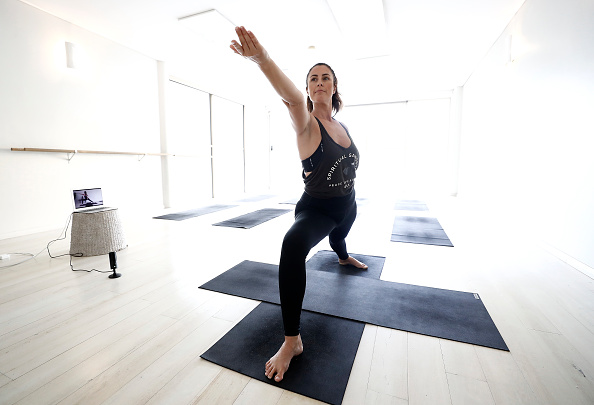The modern world encourages constant activity. True rest is often beyond the average person’s grasp, between the demands of the work week and the ample screen time we fill our downtime with. Even though “vegging out” with a Netflix show or fiddling around with an app like TikTok wiles away spare time, it is not the restorative repose that the body truly needs. Yoga Nidra is a practice that greatly helps its practitioners find the true, deep, and rejuvenating rest that helps the body heal from the rigors of life’s demands.
Yoga Nidra: It’s Meaning and Origins
The words “Yoga Nidra” themselves mean, roughly, “Yogic sleep” in Sanskrit. The state itself has mentioned in the religious text of the Upanishads. Beliefs about the nature of this state and how to reach it have varied throughout the centuries between different schools and branches of Yoga.
In the 20th century, religious teachers, athletes, and medical professionals alike began to experiment with combining Yoga philosophy and meditation with medical research about health and wellness, and contemporary fitness regimens. Yoga teachers like B.K.S. Iyengar was at the forefront of this movement, and instrumental in the global dissemination of Hatha Yoga: yoga that combines breathwork, movement, and meditation.
Yoga Nidra grew alongside Hatha Yoga around this time, as early teachers of its modern iteration combined ancient treatises with proprioceptive neuromuscular facilitation (PNF). Combining PNF tactics like progressive muscular relaxation helps the body to release the tension that accrues within as we face stressors large and small.
How it Works:
In a typical Yoga Nidra session, the practitioner will lie on a Yoga mat, perhaps bolstered comfortably by props like blankets, pillows, and special cushions, especially for the practice and other restorative branches of Yoga.
Preparation for the deep, sleeplike state Yoga Nidra is meant to induce begins with breathwork, and muscular relaxation to begin to calm the nervous system. The Yoga Nidra teacher typically reads or recites a script that is meant to guide the practitioner or class into a relaxed state. This may include a Sankalpa; an affirmation that is meant to “sink in” as the practitioner relaxes.
Gradually, the practitioner is lulled into a deeper and deeper state of relaxation, a journey through layers of a sleep-like state of consciousness.
The Four Stages of the Yoga Nidra State
What ancient teachers of Yoga philosophy termed different states of corresponding to what modern medicine and science have discovered about the differences between brain waves.
Our waking state is spent mostly in beta, a state of activity, with many sometimes racing thoughts. We need to be in beta to go about our lives, make decisions, and accomplish our various responsibilities.
Alpha waves are a more relaxed state, where your body can begin to power down to sleep and recharge. Deeper alpha, and then theta waves, are where rest becomes deeper and dreaming begins. Delta waves represent the deepest state of rest.
Yoga Nidra can mindfully lead the body to these states, where the stress hormone cortisol is lessened within the body and restorative hormones like serotonin and melatonin are produced.
Benefits of Yoga Nidra
The health benefits of a good night’s sleep are well-founded, but hours of unbroken sleep are elusive for many due to their work schedule or difficulty falling asleep. While Yoga Nidra can’t totally replace a good night’s rest, a 45-minute practice can have a mentally and physically restorative effect. Yoga Nidra offers its practitioners a chance to restore their body’s ability to support and heal itself.
Conclusion
Meditation and Yoga have become increasingly more popular tools to reach for, for those seeking mindfulness amid life’s sometimes frantic pace. While the better known Hatha Yoga combines mindfulness and movement, Yoga Nidra mimics the stages of sleep to rejuvenate the mind and body.
Featured Image Credit:
Embed from Getty Images

